The Church of St. James is located in Brno on the square of St. James. It was first mentioned at the beginning of the 13th century, but the church is probably much older. It was originally a Romanesque building. In the 14th century it was rebuilt in the Gothic style. In the following centuries, further changes were made, various chapels and extensions were added (and demolished). The church has had its current neo-Gothic appearance since the 19th century.
At the time of my visit, there was some construction around the church, so we will focus more on the interior.
Like many Gothic churches, St. James looks larger on the inside than it does on the outside. The vertical columns reach incredible heights and make the church look even taller. The tall Gothic windows let in a lot of light. The whole place is light, bright, airy and elegant.
Kostel svatého Jakuba se nachází v Brně na Svatojakubském náměstí. První zmínky o něm jsou ze začátku 13. století, ale kostel je pravděpodobně ještě mnohem starší. Původně to byla románská stavba. Ve 14. století byl přestavěn do gotického slohu. Během dalších staletí docházelo k dalším změnám, přistavovaly se (a bořily) různé kaple a přístavky. Současnou neogotickou podobu má kostel od 19. století.
V době mé návštěvy bylo kolem kostela lešení, tak se zaměříme spíš na interiér.
Jako hodně gotických kostelů, i svatý Jakub vypadá zevnitř větší, než zvenčí. Svislé pilíře se táhnou do nebetyčné výšky a opticky kostel ještě zvyšují. Z vysokých gotických oken jde do interiéru spousta světla. Celý prostor je světlý, jasný, vzdušný a elegantní.
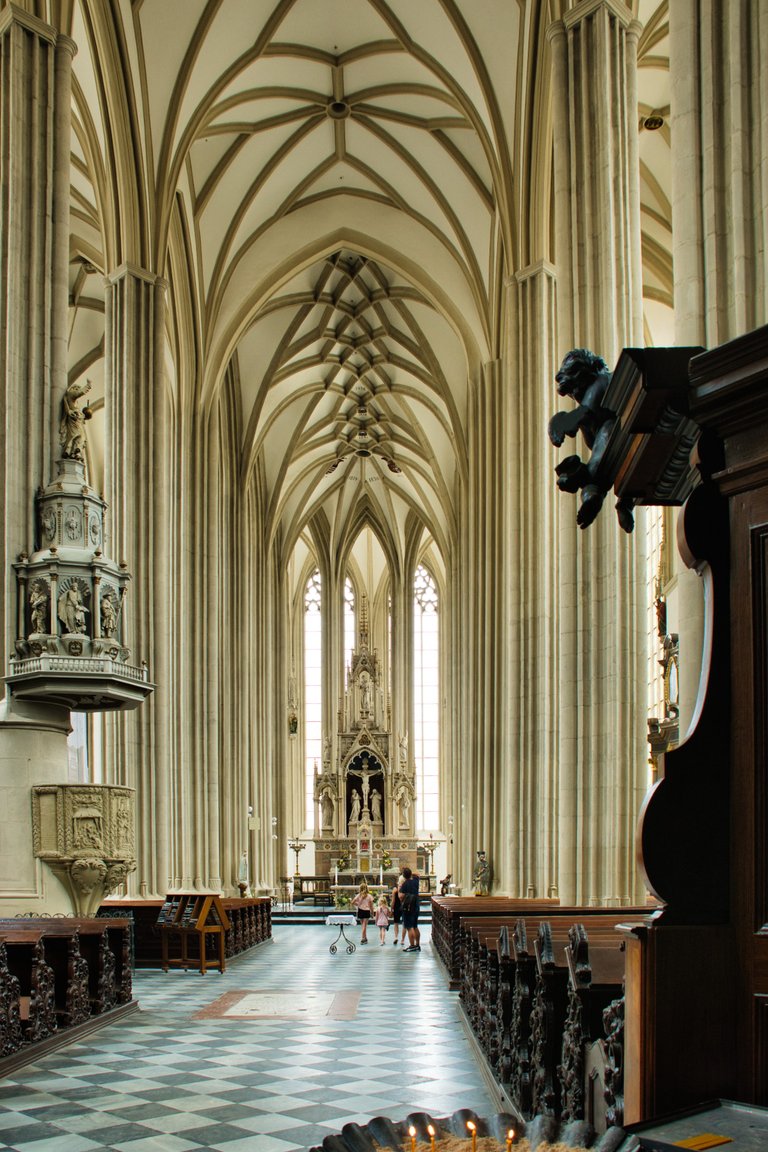
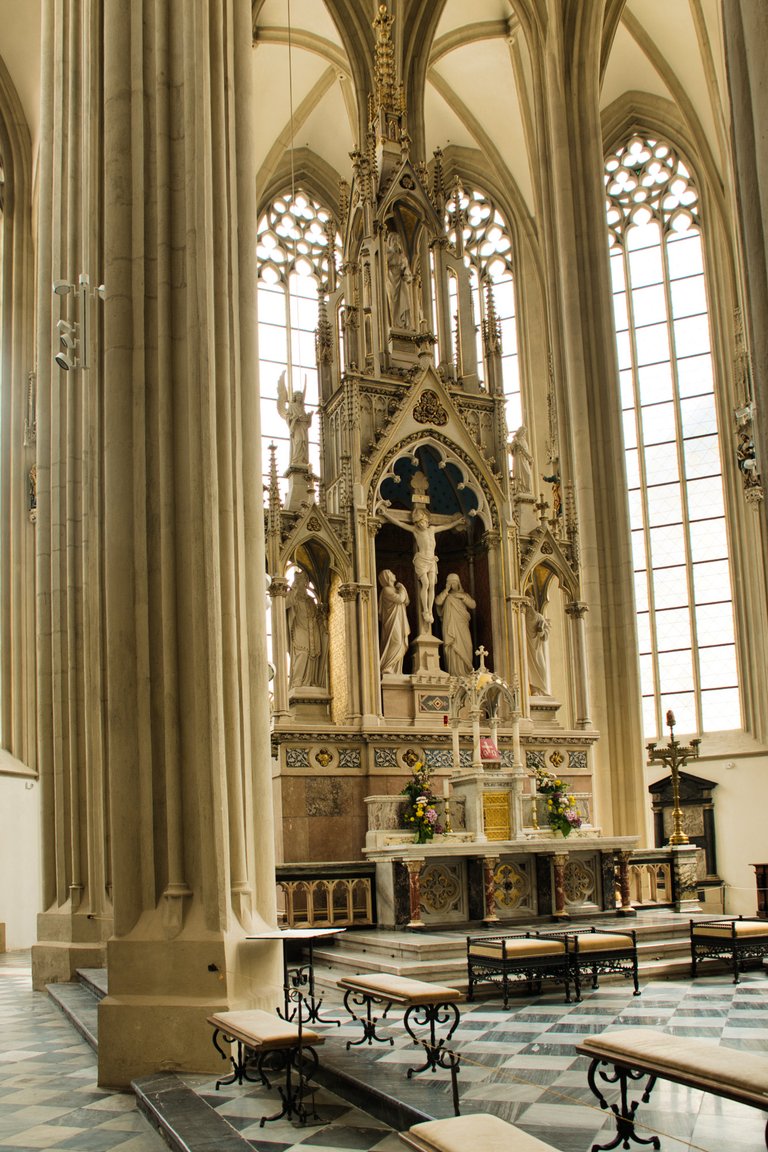
The bright interior of the church is beautifully complemented by dark accessories - for example, artistically carved pews or a beautiful organ.
The attribute of St. James is the "shell of St. James". His image can be seen, for example, right at the entrance, by the candles.
Světlý interiér kostela krásně doplňují tmavé doplňky - například umělecky vyřezávané lavice nebo nádherné varhany.
Atributem svatého Jakuba je "svatojakubská mušle". S její podobou se setkáme třeba hned u vchodu, u svíček.
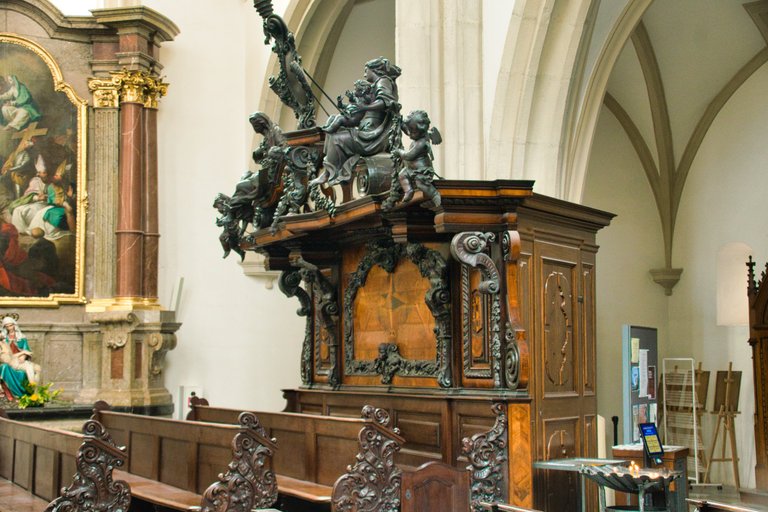
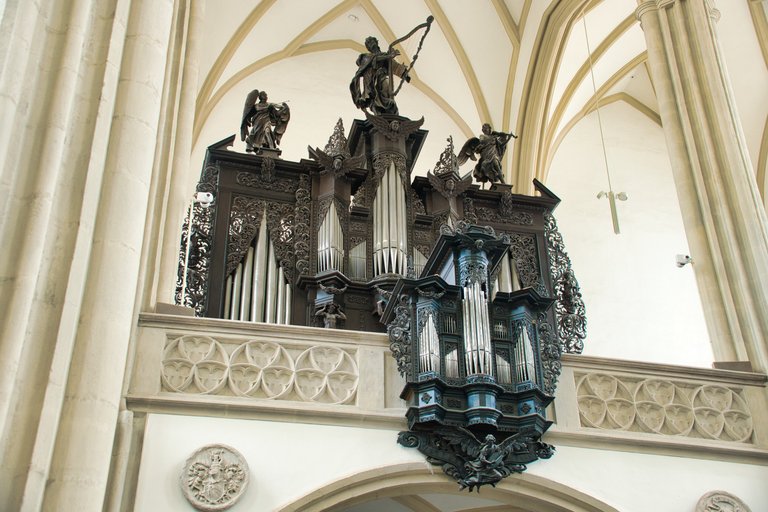
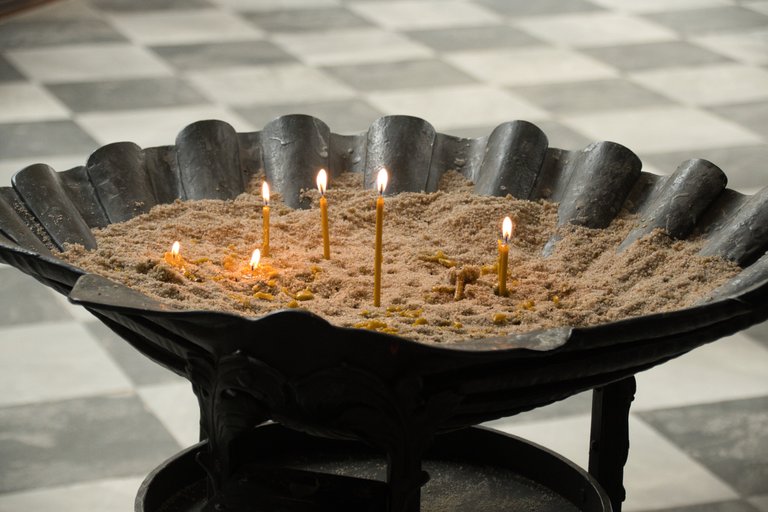
Fun fact #1
Louis Raduit de Souches (among others) is buried in the church. Who was he?
Louis Raduit de Souches was a French soldier who gained his first experience defending his hometown of La Rochelle (known from the novel The Three Musketeers). He later served in the Swedish army and was transferred to the Austrian army after disagreements with his superiors.
The Austrian Emperor Ferdinand III recognized his military talent and in 1645 appointed him commander of the defense of Brno against Swedish troops.
Swedish troops under commander Torstenson were plundering Moravia at that time, and the fall of Brno would have opened the way to Vienna. Against thirty thousand Swedes, de Souches had five hundred soldiers and a thousand militiamen from the citizens of Brno. But miracles do happen, Brno defended itself and Torstenson finally pulled away.
Souches became a marshal and in 1667 he repeated his Brno success by liberating Nitra from the Turks. Nevertheless, Brno did not forget him and he was considered the greatest Brno man of the 17th century.
Louis Raduit de Souches has an impressive tombstone behind the main altar in the church. His remains are kept in the crypt next to the altar.
V kostele je pohřbený (mimo jiné) maršál Louis Raduit de Souches. Kdo to byl?
Louis Raduit de Souches byl francouzský voják, který své první zkušenosti sbíral při obraně svého rodného města La Rochelle (známe z románu Tři mušketýři). Později sloužil ve švédském vojsku a po neshodách s nadřízenými přestoupil k rakouské armádě.
Rakouský císař Ferdinand III. správně odhadl jeho vojenský talent a v roce 1645 ho jmenoval velitelem obrany Brna před švédskými vojsky.
V té době švédská vojska pod velením maršála Torstensona plenila Moravu a pád Brna by jim otevřel cestu k Vídni. Proti třiceti tisícům Švédů měl de Souches k dispozici pět set vojáků a tisícovku domobranců z řad občanů Brna. Ale zázraky se dějí, Brno se ubránilo a Torstenson nakonec odtáhl s nepořízenou.
Kariéra de Souchese pak strmě stoupala, stal se maršálem a svůj brněnský úspěch si ještě zopakoval ještě v roce 1667 osvobozením Nitry od Turků. Nicméně Brno na něj nezapomnělo a byl považovaný za největšího Brňana 17. století.
Louis Raduit de Souches má v kostele impozantní náhrobek za hlavním oltářem. Jeho pozůstatky jsou pak uloženy v kryptě vedle oltáře.

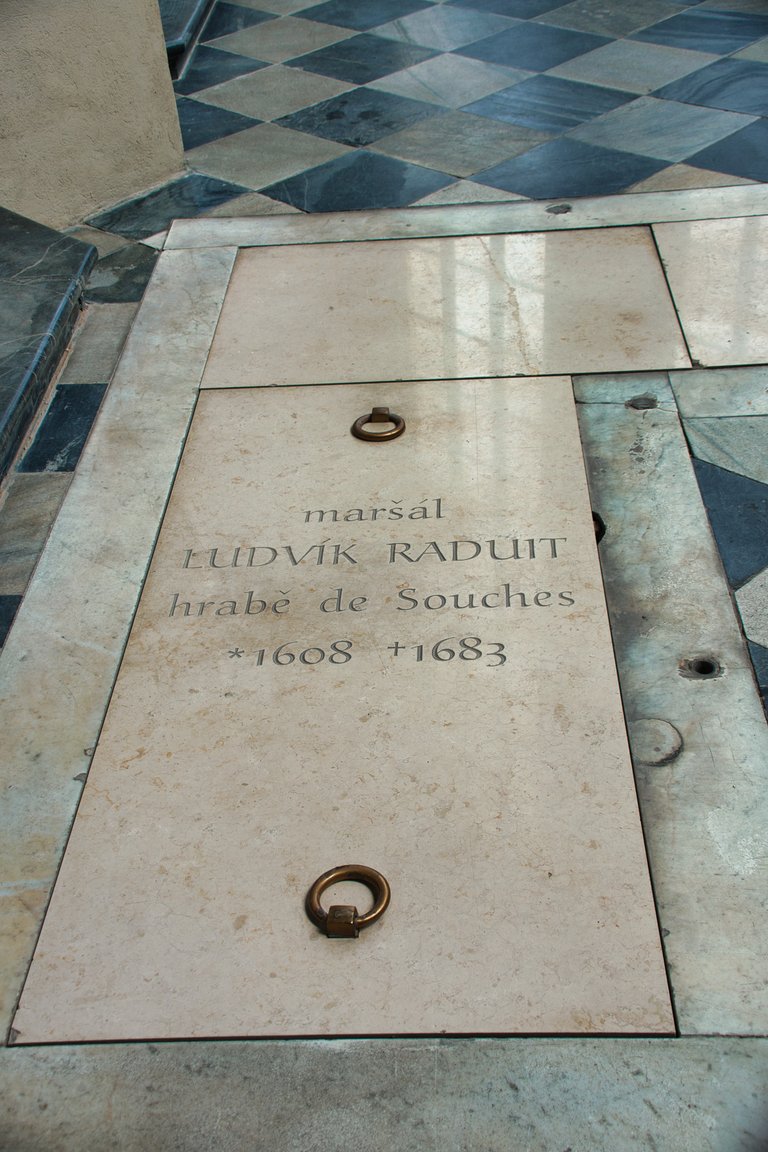
Fun fact #2
In the Middle Ages, it was common to have a cemetery around the church. But in cities there was a problem: lots of people and not enough space. So when new graves were dug, human bones were sometimes collected and placed in ossuaries.
In 1784, however, Emperor Joseph II banned burials in cities for health reasons. The cemetery of St. James was closed, the ossuary closed, and completely forgotten for the next two centuries.
The ossuary was rediscovered during an archaeological dig in 2001. And it was something big. In fact, it's the second largest ossuary in Europe, after the catacombs of Paris.
In several chambers, the bones of more than 50,000 people are carefully and systematically stored.
Ve středověku bylo běžné, že kolem kostela byl hřbitov. Ale ve městech s tím byl problém: hodně obyvatel a málo prostoru. Proto se při kopání nových hrobů někdy sbíraly lidské kosti a ukládaly se v kostnicích.
V roce 1784 však císař Josef II. z hygienických důvodů zakázal pohřbívání na území měst. Hřbitov u svatého Jakuba byl zrušen, kostnice uzavřena a během následujících dvou století zcela zapomenuta.
Kostnice byla znovu objevena při archeologickém průzkumu v roce 2001. A bylo to něco obrovského. Ve skutečnosti, po pařížských katakombách je to druhá největší kostnice v Evropě.
V několika komorách jsou zde pečlivě a systematicky uložené kosti více než 50 000 lidí.
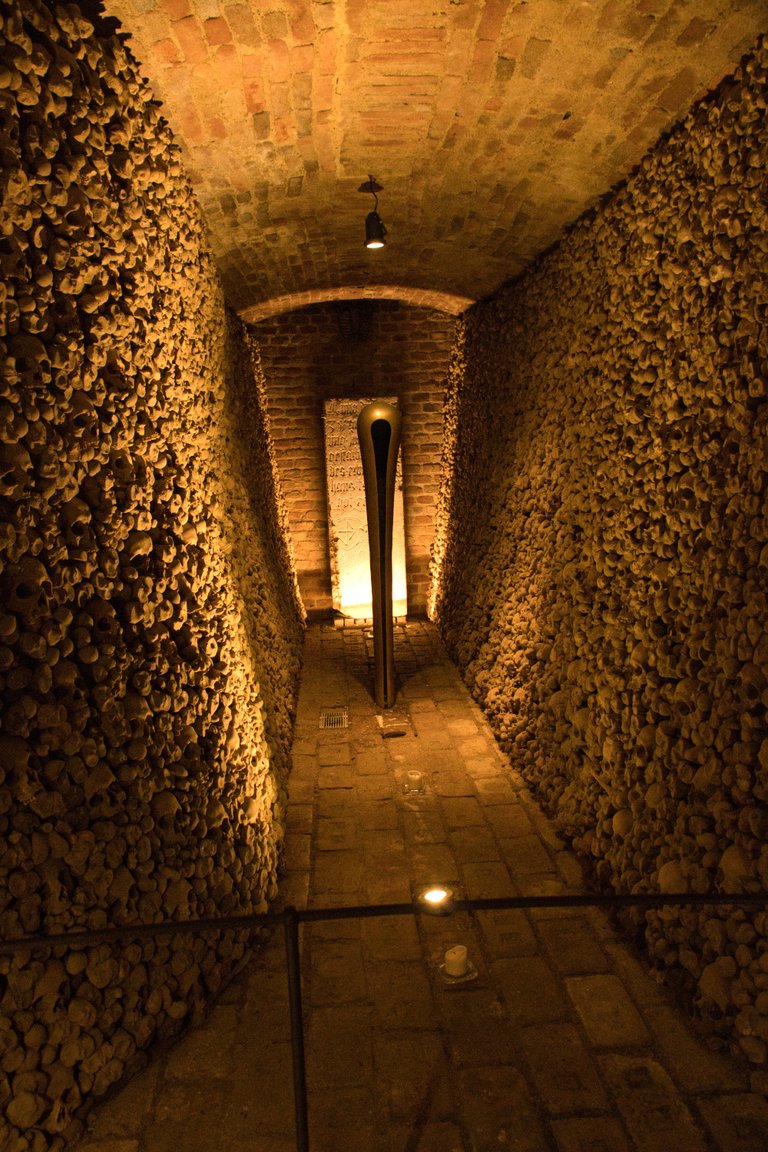
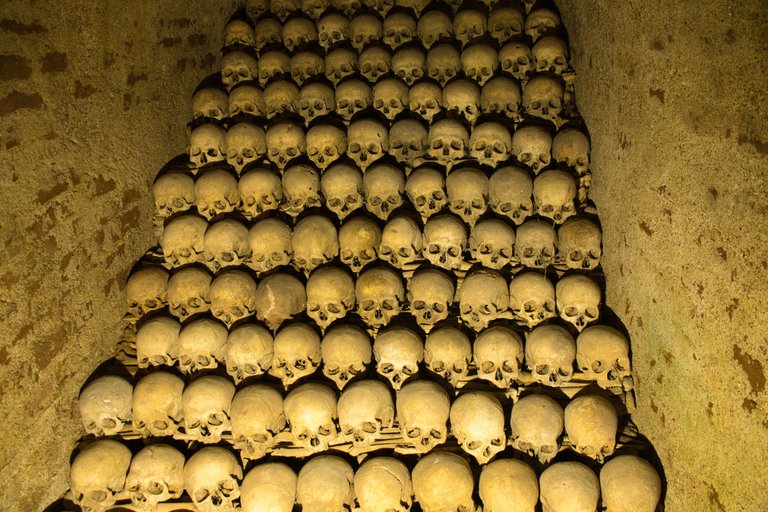
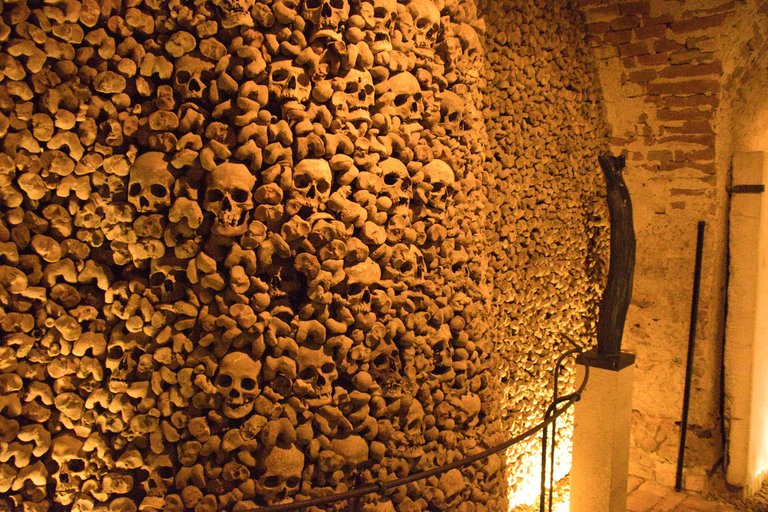
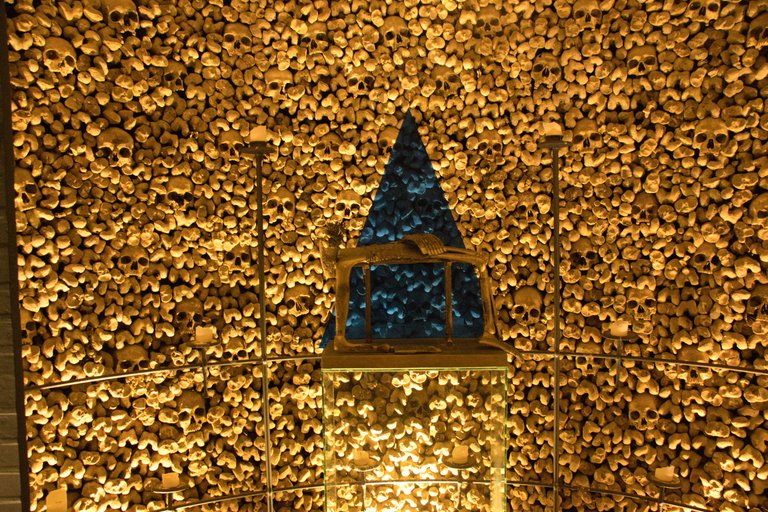
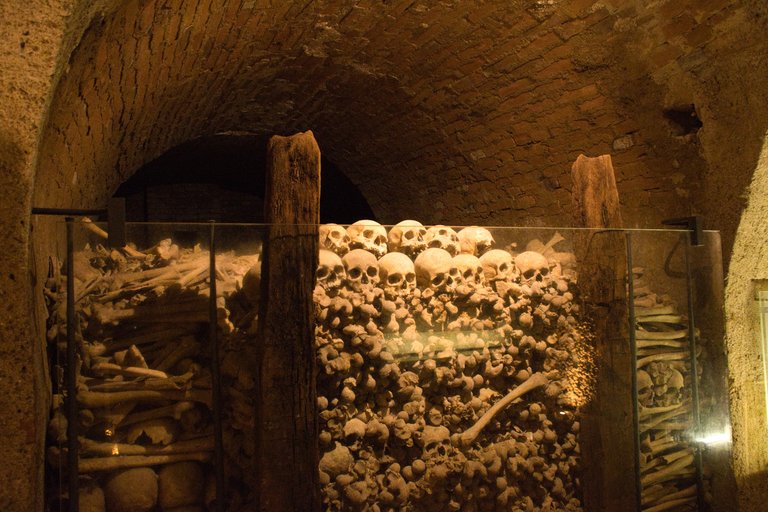
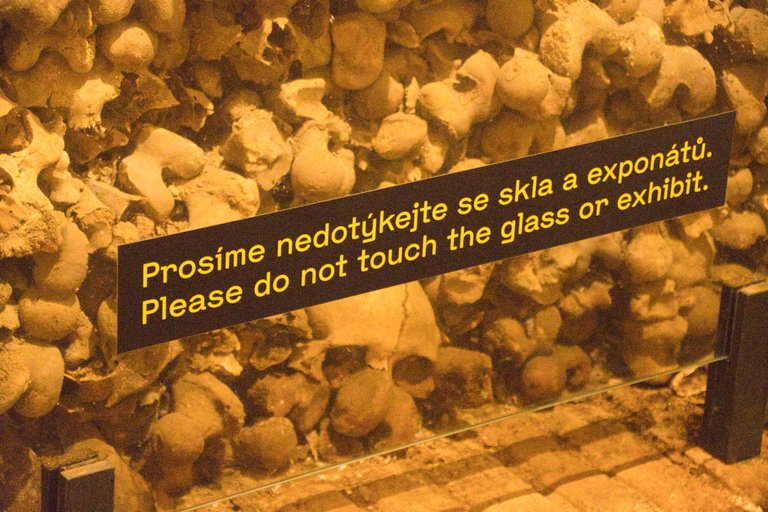


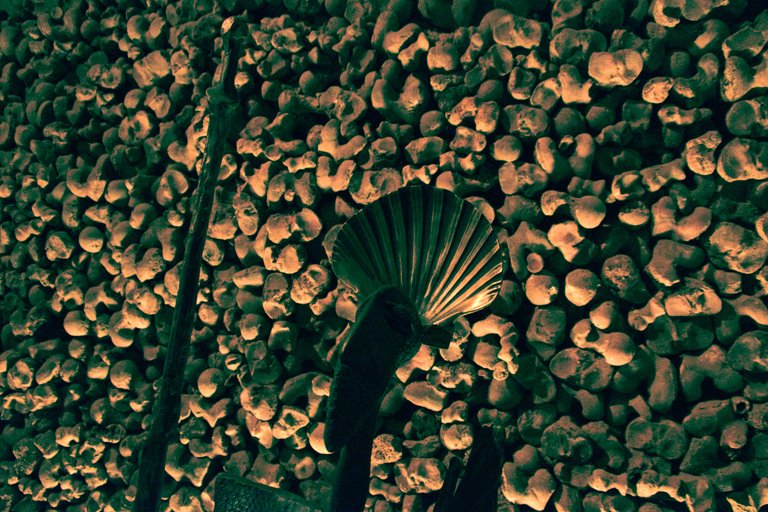

Thank you for taking the time to read this post, if you have any questions, criticisms or suggestions I would appreciate it if you would throw them in the comments box
Translated with www.DeepL.com/Translator (free version)


Congratulations, your post has been added to the TravelFeed Map! 🎉🥳🌴
Did you know you have your own profile map?
And every post has their own map too!
Want to have your post on the map too?
- Go to TravelFeed Map
- Click the create pin button
- Drag the marker to where your post should be. Zoom in if needed or use the search bar (top right).
- Copy and paste the generated code in your post (any Hive frontend)
- Or login with Hive Keychain or Hivesigner and click "create post" to post to Hive directly from TravelFeed
- Congrats, your post is now on the map!
PS: You can import your previous Pinmapple posts to the TravelFeed map.Opt Out
Congratulations, your post has been added to WorldMapPin! 🎉
Did you know you have your own profile map?
And every post has their own map too!
Want to have your post on the map too?
The interior looks amazing 🤩
Congratulations @pavelsku! You received a bright smile from TravelFeed. Our eyes were beaming while reading your post. 😁
Thanks for using TravelFeed!
@for91days (TravelFeed team)
PS: Did you know that we have our own Hive frontend at TravelFeed.com? For your next travel post, log in to TravelFeed with Hive Keychain or Hivesigner and take advantage of our exclusive features for travel bloggers.
Hiya, @lauramica here, just swinging by to let you know that this post made it into our Honorable Mentions in Travel Digest #2287.
Your post has been manually curated by the @worldmappin team. If you like what we're doing, please drop by to check out all the rest of today's great posts and consider supporting other authors like yourself and us so we can keep the project going!
Become part of our travel community: